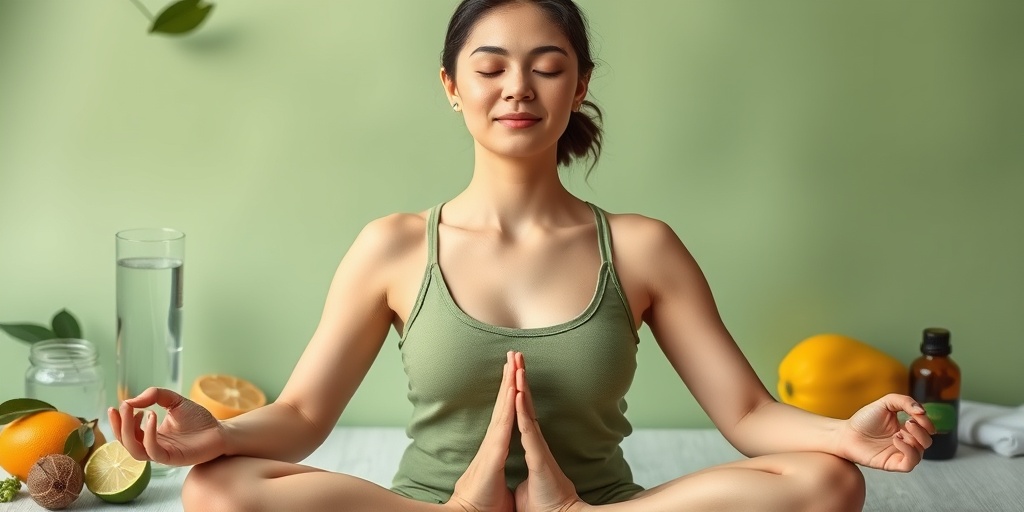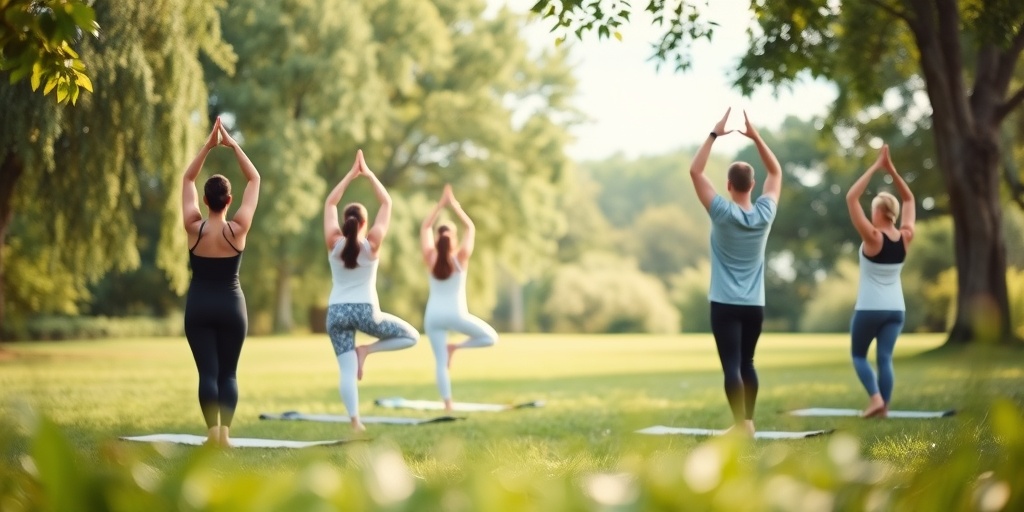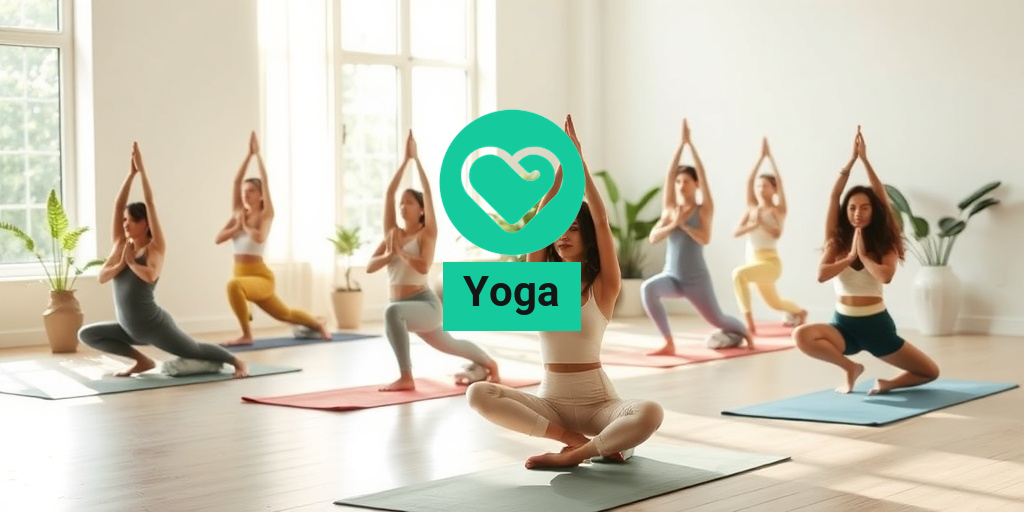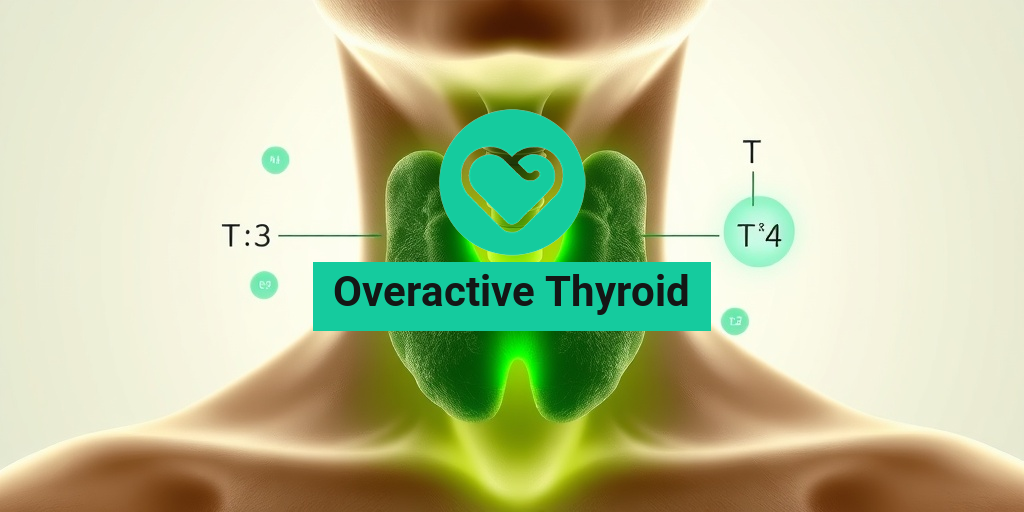What Is Yoga?
Yoga is an ancient practice that originated in India over 5,000 years ago. It combines physical postures, breathing techniques, meditation, and ethical principles to promote overall well-being. At its core, yoga is about creating harmony between the mind, body, and spirit. It is not just a form of exercise; it is a holistic approach to health that encompasses physical, mental, and emotional aspects.
The Different Styles of Yoga
There are various styles of yoga, each with its unique focus and benefits. Here are a few popular ones:
- Hatha Yoga: A gentle introduction to the most basic yoga postures.
- Vinyasa Yoga: A dynamic style that links breath with movement, often featuring a flow of poses.
- Yin Yoga: A slower-paced style that involves holding poses for longer periods to enhance flexibility.
- Power Yoga: A vigorous, fitness-based approach that builds strength and endurance.
- Chair Yoga: A modified form of yoga that can be done while seated, making it accessible for seniors or those with mobility issues.
Yoga in Modern Times
Today, yoga has gained immense popularity worldwide, with studios and classes available in almost every city. Whether you’re looking for a yoga class near you or considering a yoga retreat, there are countless options to explore. Many people also enjoy practicing yoga at home using a yoga mat and online resources.
Benefits of Yoga
The benefits of yoga extend far beyond the physical. Here are some of the most significant advantages:
Physical Benefits
- Improved Flexibility: Regular practice can increase your flexibility, reducing the risk of injury.
- Enhanced Strength: Many yoga poses build strength in various muscle groups, contributing to overall fitness.
- Better Posture: Yoga encourages awareness of body alignment, which can improve posture and alleviate back pain.
- Increased Balance: Many poses focus on balance, which is crucial for overall stability and coordination.
Mental and Emotional Benefits
- Stress Reduction: Yoga promotes relaxation and mindfulness, helping to reduce stress levels.
- Improved Focus: The meditative aspects of yoga enhance concentration and mental clarity.
- Emotional Balance: Regular practice can help regulate emotions and improve mood, making it a valuable tool for mental health.
Social Benefits
Joining a yoga studio or participating in group classes can foster a sense of community. Meeting like-minded individuals can enhance your motivation and commitment to your practice. Plus, sharing experiences in a supportive environment can lead to lasting friendships.
Yoga for Everyone
One of the most appealing aspects of yoga is its accessibility. Whether you are a beginner or an experienced practitioner, there is a style and level of yoga that suits everyone. From puppy yoga for animal lovers to yoga nidra for deep relaxation, the options are endless. You can even find specialized classes like free chair yoga for seniors or walking yoga for those who prefer a more active approach.
Conclusion
Incorporating yoga into your routine can lead to profound changes in your physical and mental health. With its myriad of styles and benefits, there’s no better time to start your yoga journey. Whether you’re looking for yoga mats on sale or searching for yoga classes nearby, the world of yoga is waiting for you. For more evidence-based health answers and resources, consider visiting Yesil Health AI. 🧘♀️✨

Yoga Poses for Beginners
Starting your yoga journey can be both exciting and a bit overwhelming. With so many yoga poses to choose from, it’s essential to begin with the basics. Here are some fundamental poses that are perfect for beginners, helping you build strength, flexibility, and confidence on your mat.
1. Mountain Pose (Tadasana)
The Mountain Pose is a foundational pose that teaches you the importance of grounding and alignment. Stand tall with your feet together, arms at your sides, and weight evenly distributed. Engage your thighs, lift your chest, and reach your arms overhead, palms facing each other. This pose helps improve posture and balance.
2. Downward-Facing Dog (Adho Mukha Svanasana)
This iconic pose is excellent for stretching the entire body. Start on your hands and knees, tuck your toes, and lift your hips towards the ceiling, forming an inverted V-shape. Keep your spine straight and your heels reaching towards the ground. Downward-Facing Dog strengthens the arms, legs, and core while providing a calming effect.
3. Child’s Pose (Balasana)
Child’s Pose is a restorative pose that allows you to relax and recharge. Kneel on the mat, sit back on your heels, and stretch your arms forward, resting your forehead on the ground. This pose is perfect for beginners to take a break and reconnect with their breath.
4. Warrior I (Virabhadrasana I)
Warrior I is a powerful pose that builds strength and confidence. Stand with your feet hip-width apart, step one foot back, and bend your front knee. Raise your arms overhead, keeping your shoulders relaxed. This pose opens the hips and chest while improving focus and determination.
5. Cat-Cow Stretch (Marjaryasana-Bitilasana)
This dynamic duo of poses is fantastic for warming up the spine. Start on all fours, with your wrists under your shoulders and knees under your hips. Inhale as you arch your back (Cow Pose) and exhale as you round your spine (Cat Pose). This flow enhances flexibility and relieves tension in the back.
6. Seated Forward Bend (Paschimottanasana)
To practice the Seated Forward Bend, sit with your legs extended in front of you. Inhale, lengthen your spine, and as you exhale, hinge at your hips to reach for your feet. This pose stretches the hamstrings and calms the mind, making it a great addition to your routine.
7. Corpse Pose (Savasana)
Often considered the most important pose, Savasana is practiced at the end of a yoga session. Lie flat on your back, arms at your sides, and allow your body to relax completely. This pose helps integrate the benefits of your practice and promotes deep relaxation.
As you explore these beginner poses, remember to listen to your body and practice at your own pace. Consider joining yoga classes or visiting a local yoga studio to deepen your practice and connect with others. 🧘♀️
Yoga and Mental Health
Yoga is not just a physical practice; it also offers profound benefits for mental health. In today’s fast-paced world, many individuals are seeking ways to manage stress, anxiety, and depression. Here’s how yoga can play a vital role in enhancing your mental well-being.
1. Stress Reduction
One of the most significant benefits of yoga is its ability to reduce stress. The combination of physical postures, breathing exercises, and meditation helps activate the body’s relaxation response. Regular practice can lower cortisol levels, leading to a calmer mind and improved emotional resilience.
2. Improved Mood
Yoga encourages the release of endorphins, the body’s natural mood lifters. Engaging in yoga can lead to feelings of happiness and contentment. Many practitioners report a sense of euphoria after a session, often referred to as the “yoga high.” Incorporating poses like Yin Yoga or Power Yoga can enhance this effect.
3. Enhanced Mindfulness
Yoga promotes mindfulness, which is the practice of being present in the moment. Through breath awareness and focused movement, individuals learn to observe their thoughts and feelings without judgment. This skill can be incredibly beneficial for managing anxiety and improving overall mental clarity.
4. Better Sleep
Many people struggle with sleep issues, and yoga can be a natural remedy. Gentle practices, such as Chair Yoga or Yoga Nidra, can help calm the mind and prepare the body for restful sleep. Establishing a bedtime routine that includes yoga can significantly improve sleep quality.
5. Community and Support
Joining a yoga class or participating in a yoga retreat can foster a sense of community and support. Connecting with others who share similar interests can alleviate feelings of isolation and promote emotional well-being. Many find that the friendships formed in yoga classes provide a valuable support system.
Incorporating yoga into your daily routine can lead to significant improvements in mental health. Whether you’re practicing at home with a yoga mat or attending classes at a local yoga studio, the benefits are profound. 🌟

Yoga for Flexibility
Flexibility is a crucial aspect of physical health, and yoga is one of the most effective practices to enhance it. Whether you’re a seasoned yogi or a beginner, incorporating yoga into your routine can significantly improve your flexibility over time.
Understanding Flexibility in Yoga
Flexibility refers to the ability of your joints and muscles to move through their full range of motion. In yoga, flexibility is not just about being able to touch your toes; it’s about achieving a balance between strength and flexibility. This balance helps prevent injuries and enhances overall performance in various physical activities.
Key Yoga Poses for Flexibility
Here are some essential yoga poses that can help improve your flexibility:
- Downward-Facing Dog (Adho Mukha Svanasana): This pose stretches the hamstrings, calves, and shoulders, promoting overall flexibility.
- Forward Bend (Uttanasana): A great pose for stretching the spine and hamstrings, helping to release tension in the back.
- Pigeon Pose (Eka Pada Rajakapotasana): This pose opens up the hips, which can be particularly tight for many people.
- Cobra Pose (Bhujangasana): This pose helps to stretch the chest and shoulders, improving flexibility in the upper body.
- Seated Forward Bend (Paschimottanasana): A fantastic way to stretch the entire back and hamstrings.
Incorporating these poses into your routine can lead to noticeable improvements in your flexibility. Aim to practice regularly, and remember that progress takes time. 🧘♀️
Tips for Enhancing Flexibility Through Yoga
To maximize your flexibility gains, consider the following tips:
- Consistency is Key: Regular practice is essential. Try to attend yoga classes or follow online sessions at least 2-3 times a week.
- Warm Up Properly: Always start with a warm-up to prepare your muscles for stretching. This can include gentle movements or poses.
- Listen to Your Body: Avoid pushing yourself too hard. Flexibility improves gradually, so respect your limits.
- Use Props: Don’t hesitate to use yoga mats, blocks, or straps to assist you in achieving the correct alignment and depth in poses.
- Incorporate Breathing Techniques: Deep breathing can help relax your muscles, making it easier to stretch further.
Yoga for Stress Relief
In today’s fast-paced world, stress has become a common part of life. Fortunately, yoga offers a holistic approach to managing stress and promoting relaxation. Through a combination of physical postures, breathing exercises, and meditation, yoga can help calm the mind and body.
The Connection Between Yoga and Stress Relief
Yoga encourages mindfulness and self-awareness, which are essential for reducing stress. By focusing on the present moment, you can detach from worries about the past or future. This practice not only helps in alleviating stress but also enhances emotional resilience.
Effective Yoga Poses for Stress Relief
Here are some yoga poses that are particularly effective for relieving stress:
- Child’s Pose (Balasana): A restorative pose that promotes relaxation and helps to release tension in the back.
- Cat-Cow Stretch (Marjaryasana-Bitilasana): This gentle flow between two poses helps to relieve tension in the spine and calm the mind.
- Legs-Up-the-Wall Pose (Viparita Karani): This pose encourages relaxation and helps reduce anxiety by calming the nervous system.
- Corpse Pose (Savasana): Often practiced at the end of a yoga session, this pose allows for deep relaxation and stress release.
- Bridge Pose (Setu Bandhasana): This pose opens the chest and heart, promoting feelings of calm and reducing stress.
Incorporating Mindfulness and Breathing
To enhance the stress-relieving benefits of yoga, focus on your breath. Here are some techniques to try:
- Deep Breathing: Inhale deeply through your nose, allowing your abdomen to expand, and exhale slowly through your mouth. This can help activate the body’s relaxation response.
- Alternate Nostril Breathing (Nadi Shodhana): This technique balances the body’s energy and calms the mind, making it an excellent practice for stress relief.
- Yoga Nidra: This guided meditation practice promotes deep relaxation and can significantly reduce stress levels.
By integrating these practices into your routine, you can cultivate a sense of peace and tranquility, making yoga a powerful tool for managing stress. 🌼

Yoga Equipment Essentials
When embarking on your yoga journey, having the right equipment can significantly enhance your practice. Whether you’re a beginner or a seasoned yogi, understanding the essentials can help you get the most out of your sessions. Here’s a breakdown of the must-have yoga equipment that can elevate your experience.
1. Yoga Mat
The yoga mat is arguably the most essential piece of equipment for any yogi. It provides a stable, non-slip surface that helps you maintain your balance during various yoga poses. When choosing a yoga mat, consider the following:
- Thickness: A thicker mat offers more cushioning, which is beneficial for those with sensitive joints.
- Material: Look for mats made from eco-friendly materials like natural rubber or TPE.
- Texture: A textured surface can provide better grip, especially during sweaty sessions like hot yoga.
2. Yoga Blocks
Yoga blocks are fantastic tools for beginners and advanced practitioners alike. They help you achieve proper alignment and can make challenging poses more accessible. Use them to:
- Support your hands in poses like triangle pose or half-moon pose.
- Enhance your stretches and deepen your practice.
3. Yoga Strap
A yoga strap is another versatile tool that can assist in achieving flexibility. It’s particularly useful for:
- Holding poses longer and deeper.
- Assisting in stretches, especially for those who may not reach their feet easily.
4. Comfortable Clothing
Investing in quality yoga pants and tops can make a world of difference. Look for clothing that is:
- Breathable: Fabrics like cotton or moisture-wicking materials keep you comfortable.
- Stretchable: Ensure your clothes allow for a full range of motion.
5. Additional Accessories
Depending on your practice, you might also consider:
- Bolsters: Great for restorative yoga and providing support in various poses.
- Yoga Wheel: Helps in improving flexibility and balance.
- Yoga Towels: Essential for hot yoga sessions to absorb sweat and maintain grip.
Yoga Safety Tips
Practicing yoga can be incredibly beneficial for both your body and mind, but safety should always be a priority. Here are some essential tips to ensure a safe and effective yoga practice.
1. Listen to Your Body
Your body is your best guide. If you feel pain or discomfort during a pose, it’s crucial to listen to your body and adjust accordingly. Remember, yoga is about progress, not perfection. Don’t push yourself into a position that feels wrong.
2. Warm-Up Properly
Before diving into your yoga class, take a few minutes to warm up your muscles. Simple stretches or gentle movements can help prepare your body for more intense poses. This is especially important if you’re practicing styles like power yoga or yin yoga.
3. Use Props Wisely
Don’t hesitate to use yoga props like blocks and straps to assist you. They can help you maintain proper alignment and prevent injuries. If you’re unsure how to use them, ask your instructor for guidance.
4. Stay Hydrated
Especially during hot yoga sessions, staying hydrated is crucial. Drink plenty of water before, during, and after your practice to keep your body functioning optimally. 💧
5. Choose the Right Class
When looking for yoga classes, consider your skill level and the style of yoga that suits you best. If you’re a beginner, look for classes labeled as “beginner” or “gentle.” As you progress, you can explore more challenging classes like power yoga or yoga nidra.
6. Practice Mindfulness
Yoga is not just about physical postures; it’s also about mental well-being. Incorporate mindfulness into your practice by focusing on your breath and being present in the moment. This can help reduce the risk of injury and enhance your overall experience.
By following these essential tips and utilizing the right equipment, you can create a safe and enjoyable yoga practice that supports your health and well-being. 🧘♀️✨

Frequently Asked Questions about Yoga
What is Yoga?
Yoga is a holistic practice that combines physical postures, breathing techniques, and meditation to promote overall well-being. It aims to enhance flexibility, strength, and mental clarity.
What are the benefits of practicing Yoga?
- Improves flexibility and balance
- Reduces stress and anxiety
- Enhances mental focus and clarity
- Promotes physical strength and endurance
- Encourages mindfulness and relaxation
What types of Yoga are available?
There are various styles of Yoga, including:
- Hatha Yoga: A gentle introduction to the most basic yoga postures.
- Vinyasa Yoga: A dynamic style that links breath with movement.
- Yin Yoga: A slow-paced style that involves holding poses for longer periods.
- Power Yoga: A vigorous, fitness-based approach to yoga.
- Chair Yoga: A gentle form of yoga practiced while sitting on a chair.
How do I choose the right Yoga mat?
When selecting a yoga mat, consider the following factors:
- Thickness: A thicker mat provides more cushioning, while a thinner mat offers better stability.
- Material: Look for non-toxic materials that provide good grip.
- Texture: A textured surface can help prevent slipping during poses.
- Size: Ensure the mat is long enough for your height.
Where can I find Yoga classes near me?
To find yoga classes in your area, you can:
- Search online for local yoga studios.
- Use fitness apps that list nearby classes.
- Check community centers or gyms for offerings.
What should I wear to a Yoga class?
For a comfortable experience, wear yoga pants or leggings that allow for movement. A fitted top is also recommended to avoid distractions during poses.
What is Yoga Nidra?
Yoga Nidra is a form of guided meditation that promotes deep relaxation and restorative sleep. It is often referred to as “yogic sleep” and can be practiced by anyone, regardless of experience level.
Can I practice Yoga at home?
Absolutely! You can practice yoga at home using online videos or apps. Just ensure you have a suitable yoga mat and a quiet space to focus.
What is a Yoga retreat?
A yoga retreat is an immersive experience where participants engage in daily yoga practices, meditation, and wellness activities, often in a serene environment. It’s a great way to deepen your practice and connect with like-minded individuals.
Is Yoga suitable for beginners?
Yes! Many classes cater specifically to beginners, focusing on foundational poses and techniques. It’s a great way to start your journey into the world of yoga.
What is Puppy Yoga?
Puppy Yoga combines traditional yoga practices with the joy of being around puppies. It’s a fun and light-hearted way to practice while enjoying the company of furry friends! 🐶




